НАУЧНО-ОБРАЗОВАТЕЛЬНОЕ КУЛЬТУРОЛОГИЧЕСКОЕ ОБЩЕСТВО
НАУЧНАЯ АССОЦИАЦИЯ ИССЛЕДОВАТЕЛЕЙ КУЛЬТУРЫ
Научное рецензируемое периодическое электронное издание
Выходит с 2014 г.

Гипотезы:
ТЕОРИЯ КУЛЬТУРЫ
Э.А. Орлова. Антропологические основания научного познания
Дискуссии:
В ПОИСКЕ СМЫСЛА ИСТОРИИ И КУЛЬТУРЫ (рубрика А.Я. Флиера)
А.В. Костина, А.Я. Флиер. Тернарная функциональная модель культуры (продолжение)
Н.А. Хренов. Русская культура рубежа XIX–XX вв.: гностический «ренессанс» в контексте символизма (продолжение)
В.М. Розин. Некоторые особенности современного искусства
В.И. Ионесов. Память вещи в образах и сюжетах культурной интроспекции
Аналитика:
КУЛЬТУРОЛОГИЧЕСКИЕ РАЗМЫШЛЕНИЯ
А.Я. Флиер. Социально-организационные функции культуры
М.И. Козьякова. Античный космос и его эволюция: ритуал, зрелище, развлечение
Н.А. Хренов. Спустя столетие: трагический опыт советской культуры (продолжение)

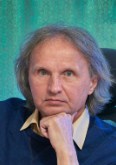
А.Н. Ковалев
Божественная пропорция в поисках эпохи Возрождения
(окончание)
Аннотация. Проанализирован графический источник 1533 года, однозначно говорящий, что в XVI веке в архитектуре готических храмов, если не использовали, то искали Божественную пропорцию. Выдвинута гипотеза, поддержанная примерами, что в позднее средневековье в архитектуре при триангуляции использовали равнобедренный треугольник с углом в 360 при вершине в качестве дополнительного к равностороннему. Показано, что Леонардо да Винчи в своих работах скорее применял угол в 360, чем Божественную пропорцию. Рассмотрен синтез герметических учений и поисков эпохи Возрождения во фреске Микеланджело «Сотворение Адама», где художником была использована Божественная пропорция.
Ключевые слова. Золотое сечение, эпоха Возрождения, триангуляция, готическая архитектура, живопись да Винчи, Витрувианский человек, «Сотворение Адама» Микеланджело.
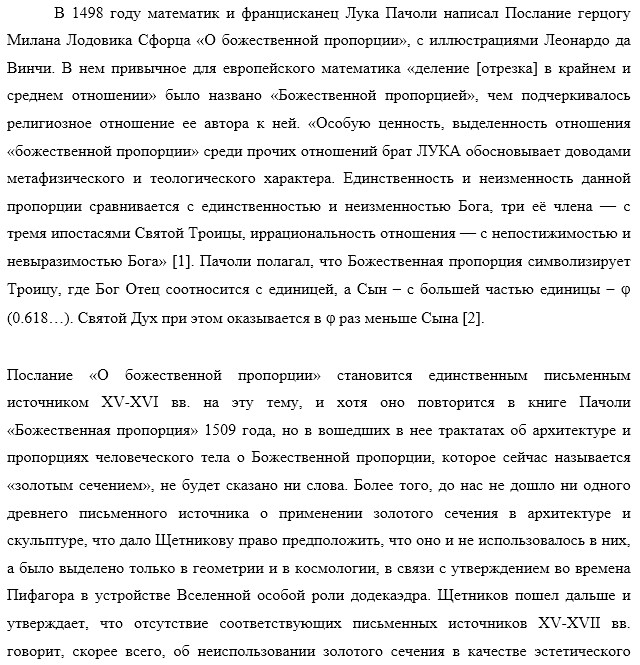
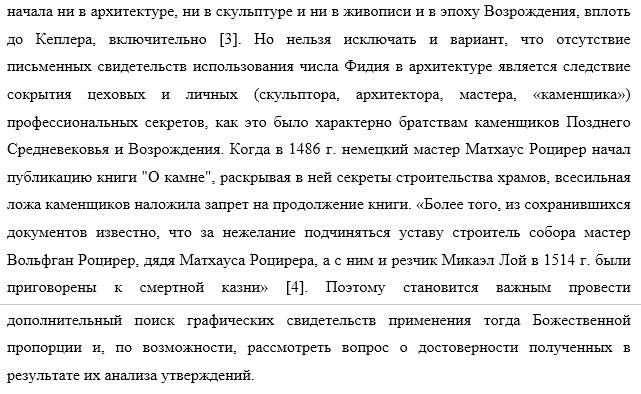
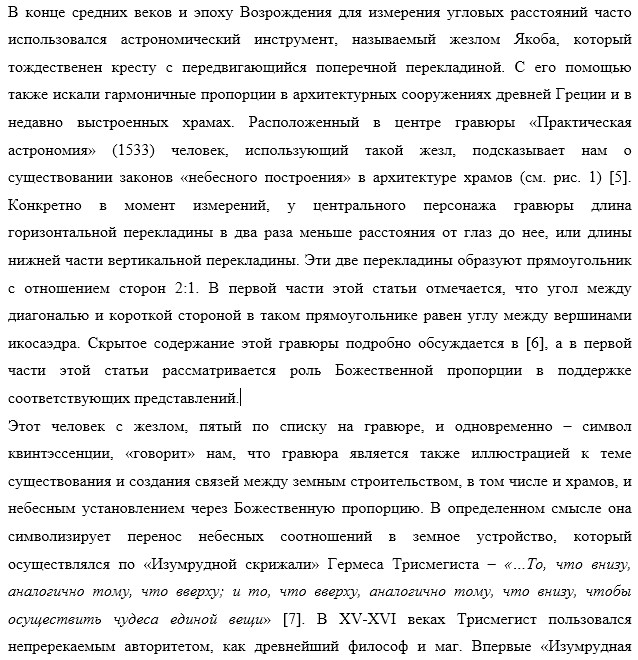
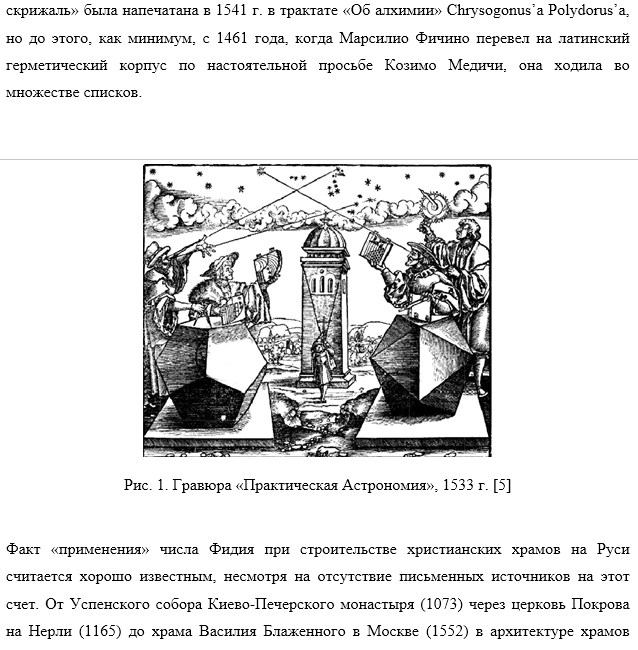
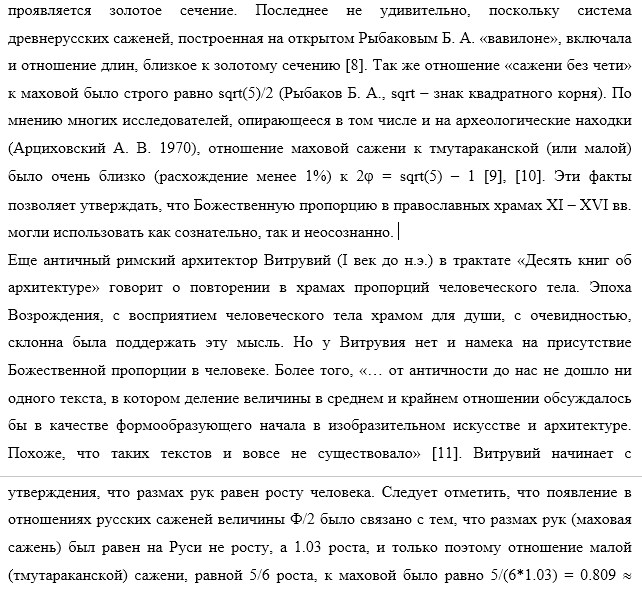
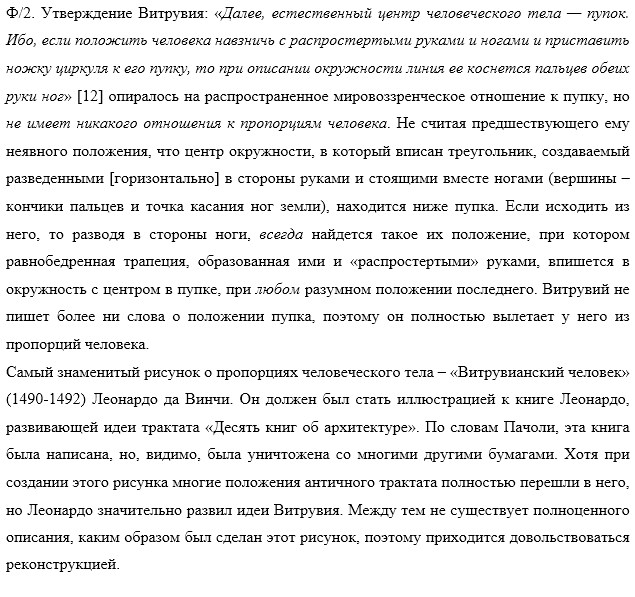
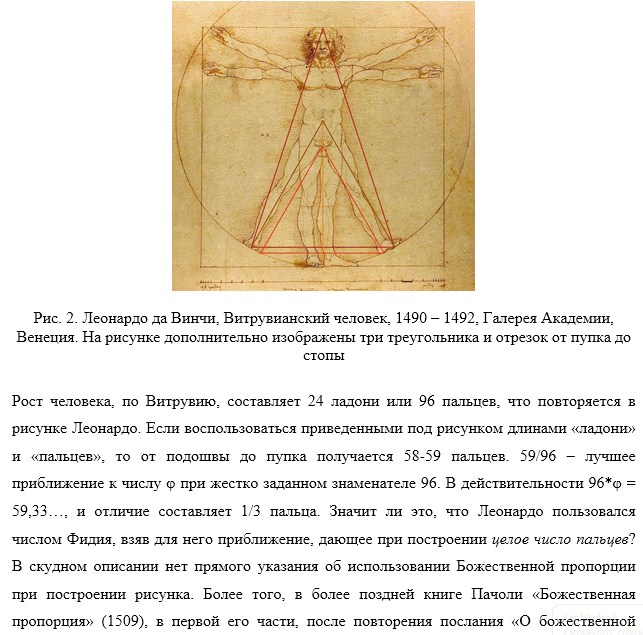
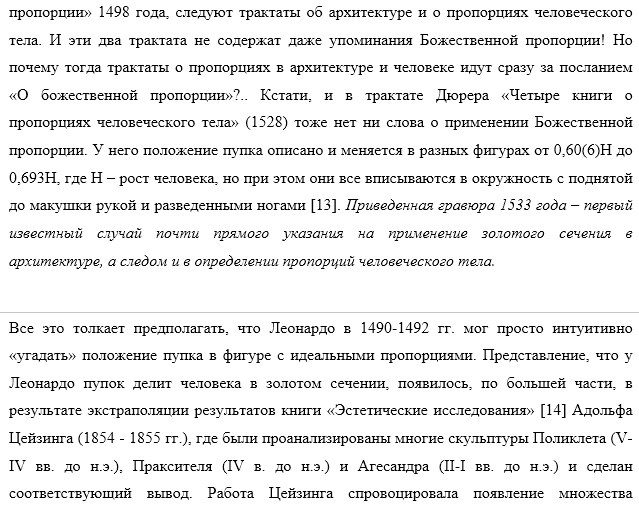
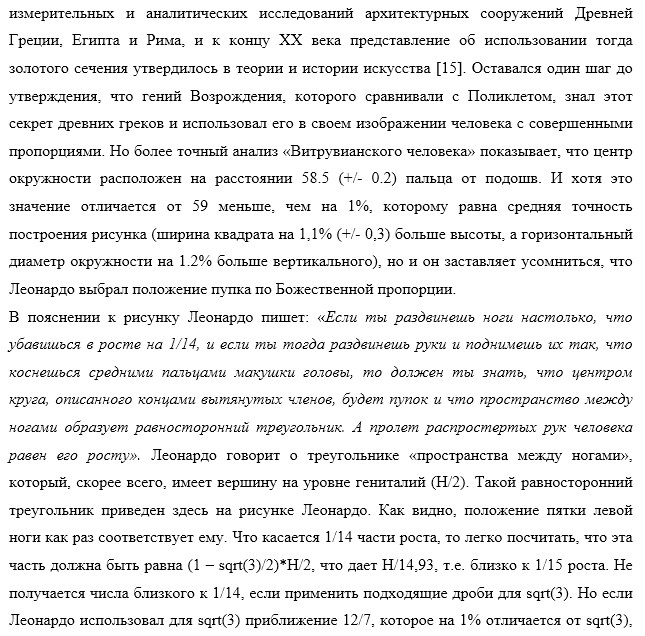
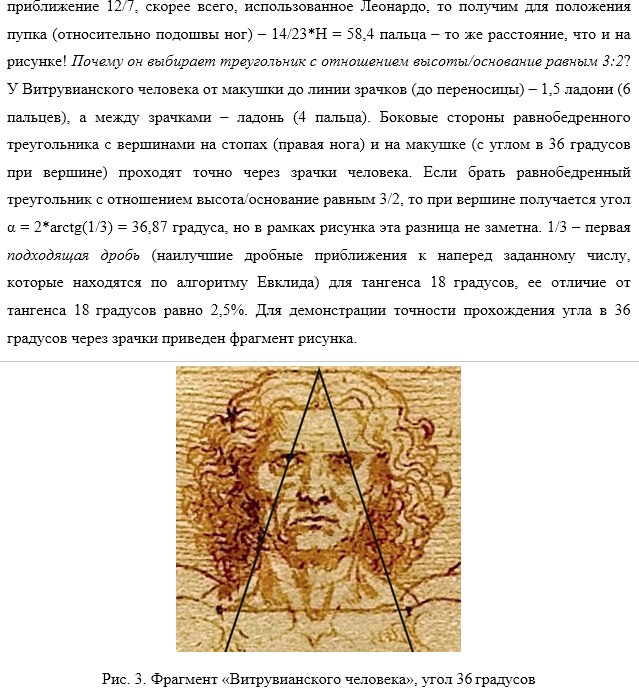
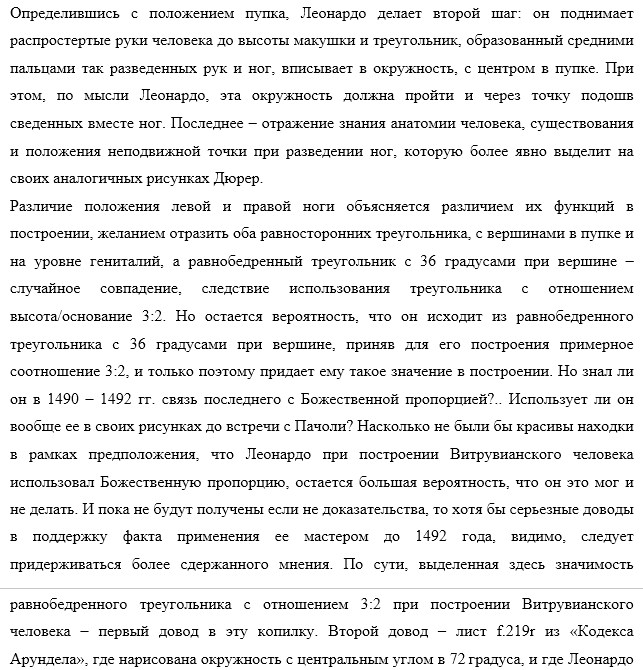
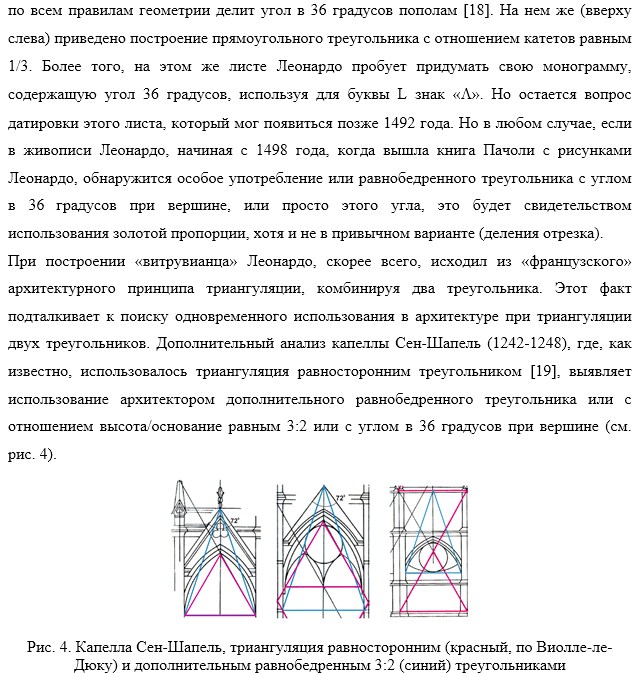
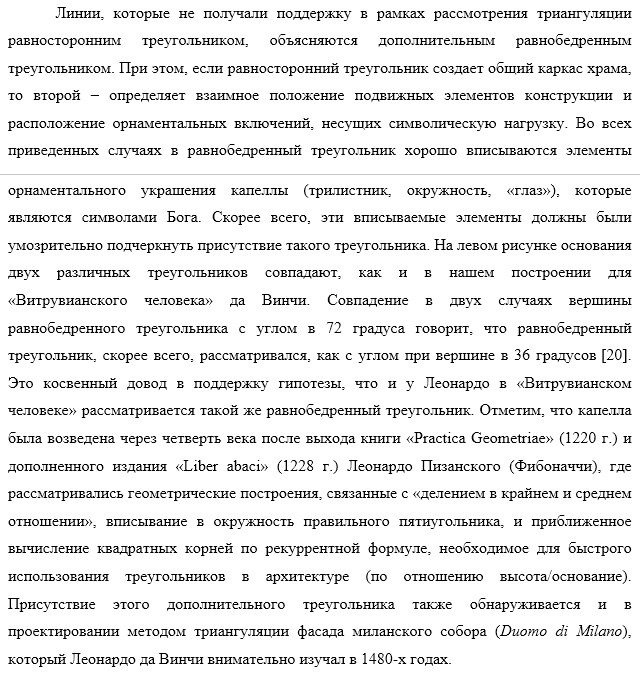
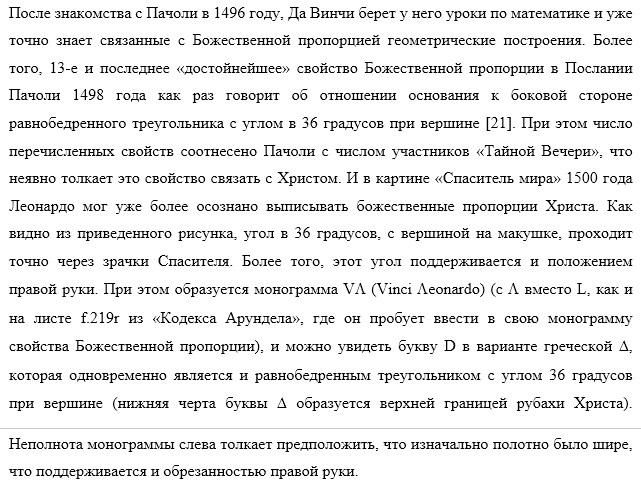
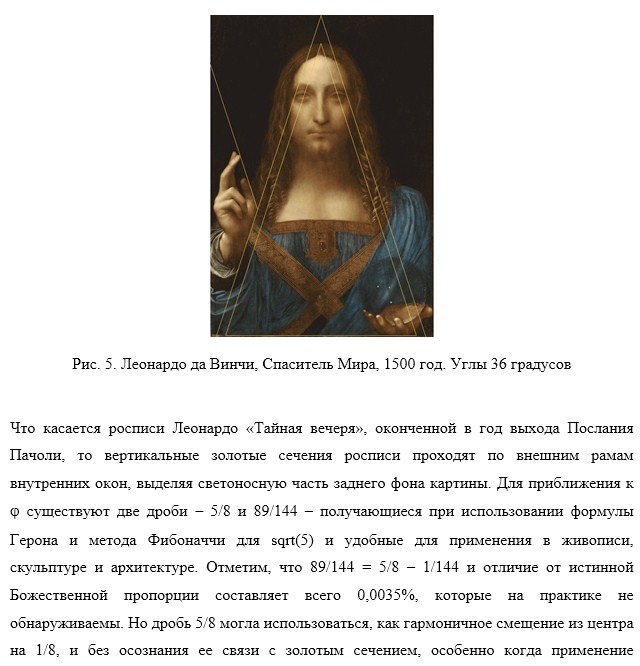
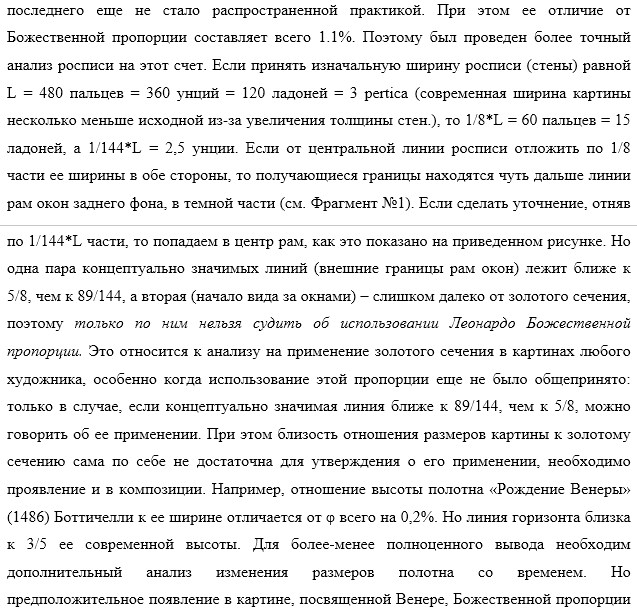
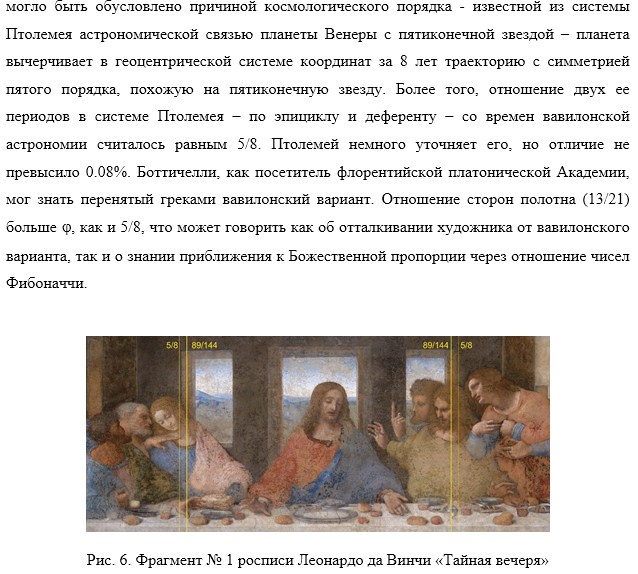
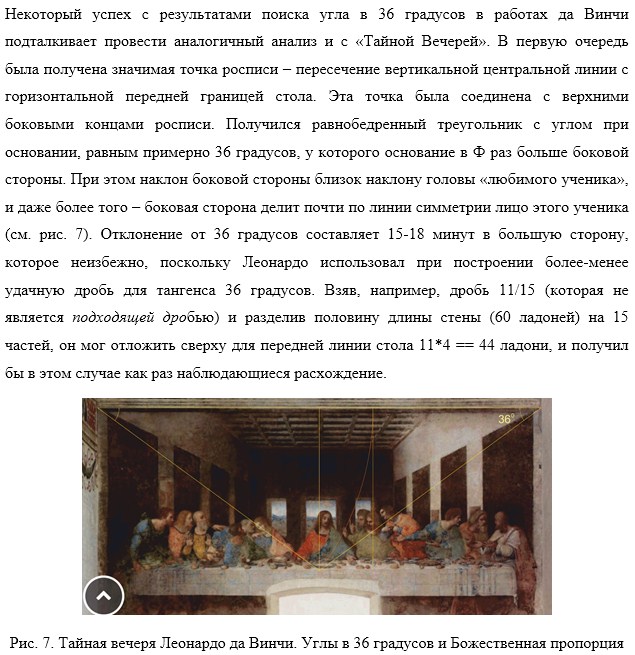
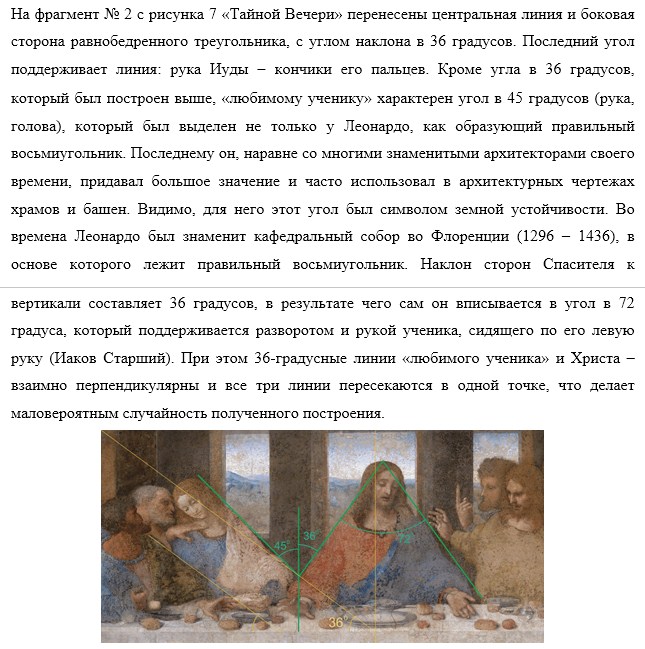
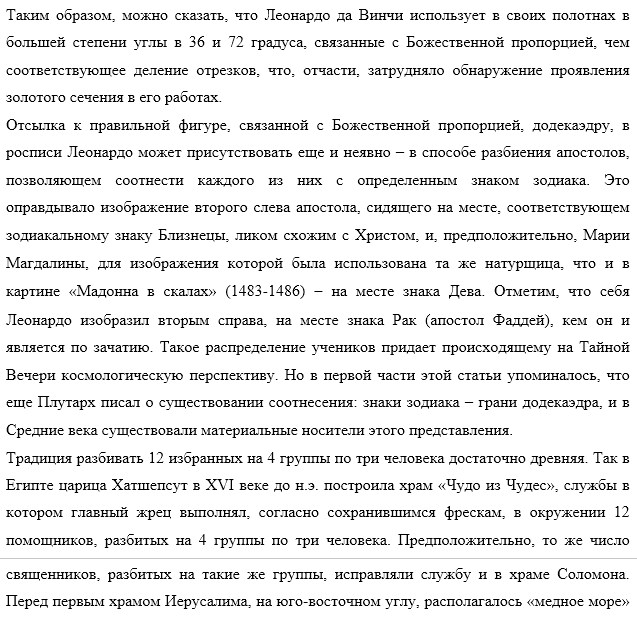
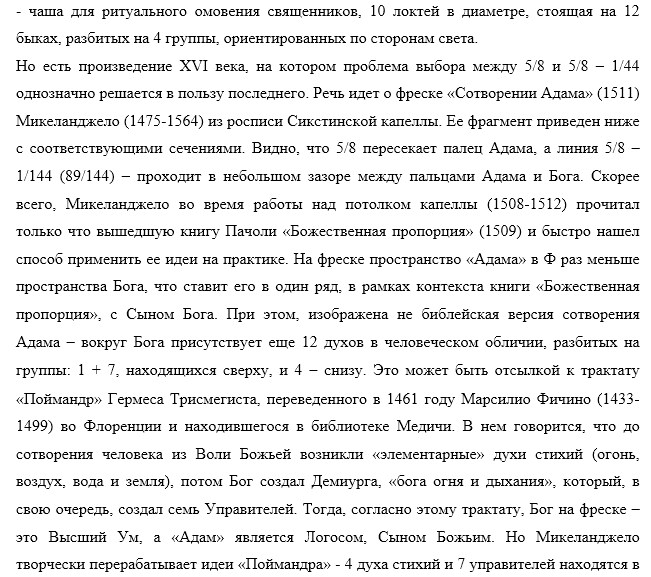
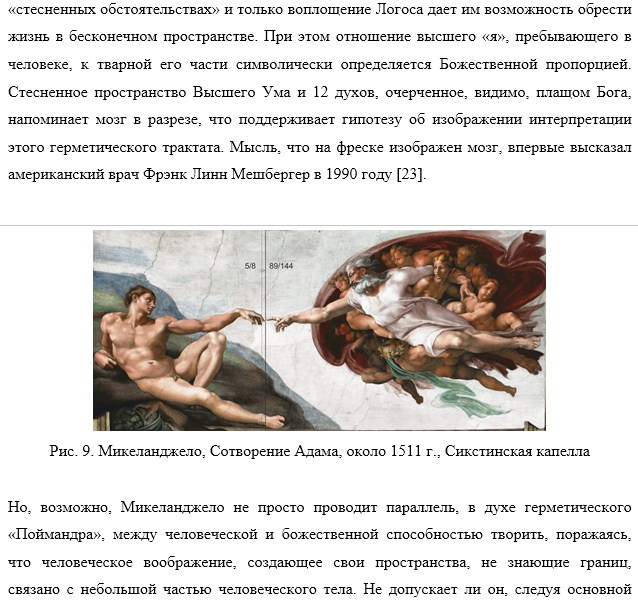
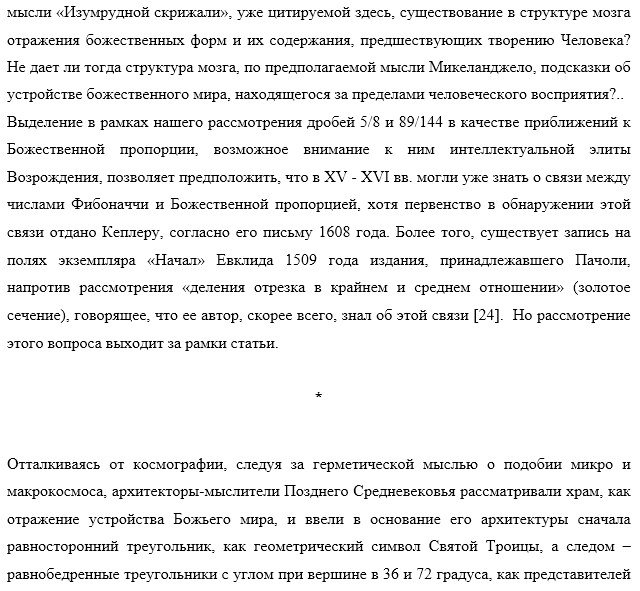
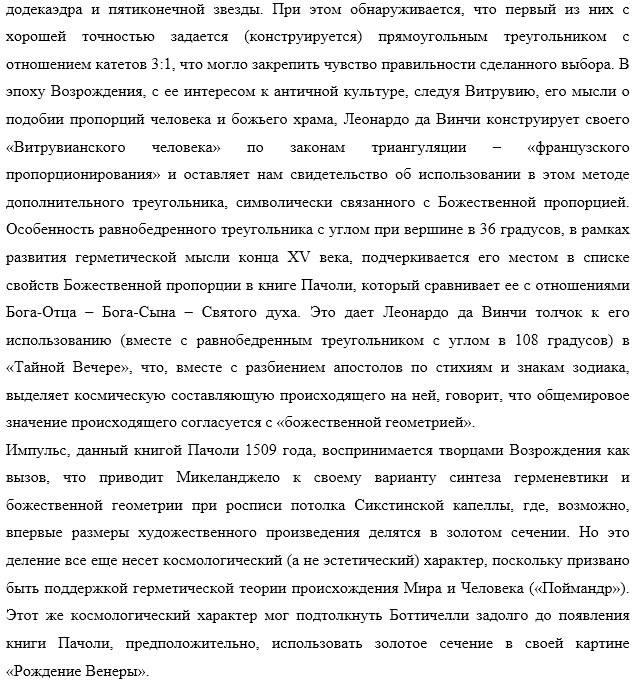
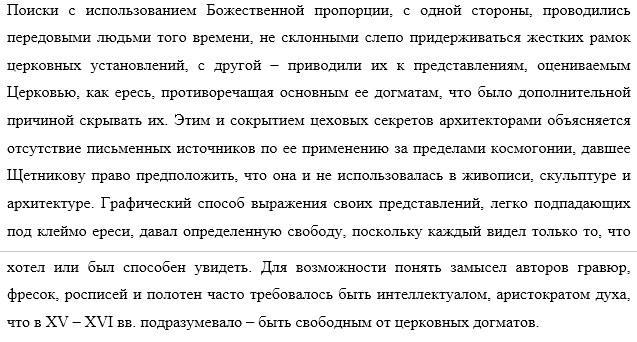
ПРИМЕЧАНИЯ
[1] Щетников А.И. Лука Пачоли и его трактат «О божественной пропорции», Приложение к репринтному изданию 1509 г. Матем. обр., 2007, выпуск 1(41). С. 36.
[2] Пачоли Лука. О божественной пропорции. Репринт изд. 1509. С приложением перевода А. И. Щетникова. М.: Фонд «Русский авангард», 2007.
[3] Щетников А И. Указ. соч.
[4] Волошинов А.В. Математика и искусство. М.: Просвещение, 2000. С. 238.
[5] Apian Petrus. Instrument Buch, Ingolstadt, 1533. P. 3. URL: http://www.fq.math.ca/Scanned/34-4/letter2.pdf.
[6] Ковалев А.Н. Гностические этюды, 2017, ISBN 978-5-4485-3536-9. URL: http://kovalevandrey.ihostfull.com/Books/Book_3.html.
[7] Странден Д. Герметизм. Его происхождение и основные учения (Сокровенная философия египтян). – СПб.: Издание А.И. Воронец, 1914. URL: http://psylib.org.ua/books/stran01/index.htm
[8] Рыбаков Б.А. Архитектурная математика древнерусских зодчих // Советская археология. 1957. № 1. С. 83-112.
[9] Шевелев И. Ш. Принцип пропорции. М.: Стройиздат, 1986. 200 с.
[10] Чернов А. Хроники изначального времени. СПб.: Вита Нова, 2006. 480 с.
[11] Щетников А.И. Указ. соч. С. 38.
[12] Витрувий Поллион Марк. Десять книг об архитектуре. М.: Едиториал УРСС, 2003.
[13] Дюрер А. Дневники, письма, трактаты, Л.-М.: Искусство, 1957. Т. 2. 254 с.
[14] Zeising A. Neue Lehre von den Proportionen des menschlichen Körpers. Leipzig: Rudolph Weigel, 1854. URL: http://books.google.am/books?id=k8g6AAAAcAAJ&pg=PA282&redir_esc=y#v=onepage&q&f=false
[15] Волошинов А.В. Указ. соч. С. 238; Чернов А. Указ. соч.; Ковалев Ф.В. Золотое сечение в живописи / Ф. В. Ковалев. Киев, «Выща Школа», 1989. 147 с.
[16] Arundel MS 263, f.11r. URL: http://www.bl.uk/manuscripts/Viewer.aspx?ref=arundel_ms_263_f001r
[17] Волошинов А.В. Указ. соч.
[18] Arundel MS 263, f.219r. URL: http://www.bl.uk/manuscripts/Viewer.aspx?ref=arundel_ms_263_f001r
[19] Волошинов А.В. Указ. соч. С. 239.
[20] На основании имевшихся в распоряжении приближенных чертежей капеллы невозможно сделать однозначный вывод об отношении высота/основание используемого равнобедренного треугольника (3/2 или 37/24). Использование последнего варианта однозначно говорило бы о выборе угла при вершине в 360.
[21] Пачоли Лука. Ор. cit.
[22] В этом фрагменте вертикальная средняя линия построена по центру стола, который расположен немного правее центра росписи (стены).
[23] Meshberger, Frank Lynn. An Interpretation of Michelangelo’s Creation of Adam Based on Neuroanatomy/ JAMA. 10 October 1990. V. 264(14), p. 1837-1841.
[24] Herz-Fischler R., The Fibonacci Quarterly, Letter to the editor, V. 24, №4, 1986. p. 382. URL: http://www.fq.math.ca/Scanned/34-4/letter2.pdf
© Ковалев А.Н., 2019
Статья поступила в редакцию 16 мая 2019 г.
Ковалев Андрей Николаевич,
физик, независимый исследователь,
(Санкт-Петербург)
e-mail kovandr1803@gmail.com

ISSN 2311-3723
Учредитель:
ООО Издательство «Согласие»
Издатель:
Научная ассоциация
исследователей культуры
№ государственной
регистрации ЭЛ № ФС 77 – 56414 от 11.12.2013
Журнал индексируется:
Выходит 4 раза в год только в электронном виде
Номер готовили:
Главный редактор
А.Я. Флиер
Шеф-редактор
Т.В. Глазкова
Руководитель IT-центра
А.В. Лукьянов
Наш баннер:

Наш e-mail:
cultschool@gmail.com
НАШИ ПАРТНЁРЫ:
Мнение редакции может не совпадать с мнением авторов.
При полном или частичном использовании материалов ссылка на «Культуру культуры» обязательна.
© Научная ассоциация исследователей культуры, 2014-2024







